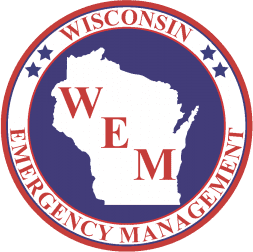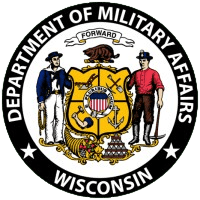VOLK FIELD, Wis. – The Wisconsin National Guard and the Wisconsin Department of Military Affairs Division of Emergency Management (WEM) coordinated and conducted the Miles Paratus Special Focus Event at both Volk Field and Fort McCoy, Wisconsin, June 5-9, aiming to fulfill part of its unique dual mission as the first military responder when disaster strikes here at home.
The five-day emergency response exercise, involving approximately 2,500 military and civilian personnel, focused on inter-agency efforts to plan, train, and respond cohesively across the state. The event brought more than 50 civilian local, state, and national emergency response agencies as well as private sector organizations together. More than 20 National Guard units from Wisconsin, West Virginia, Idaho, Minnesota, and Illinois also participated in an effort to build relationships before an actual incident occurs along with personnel from Federal Emergency Management Region V, volunteer organizations such as the American Red Cross and Salvation Army, and even private sector businesses who participated through the state’s Business Emergency Operations Center.
Col. Daniel Pulvermacher, Joint Force Headquarters director of installation management, and Greg Engle, director of the Bureau of Planning and Preparedness for WEM, directed the Miles Paratus exercise and spoke about the challenges, progress, and goals of the training.
One of the most exciting aspects of Miles Paratus is building relationships between military and civilian agencies, on the command level as well as at the execution level, Pulvermacher said. The exercise has been a great opportunity to network, share lessons learned and resources, and integrate into a fully functional team.
“These types of exercises need to happen,” Pulvermacher continued, “because when the public needs you, that’s not the time to train and get ready. Now’s the time to do the training, to get proficient, to hone your skills, so that when the public needs you, you’re prepared to do what is going to be needed of you.”
Engle concurred with the importance of the training and developing the relationships between the participating agencies and organizations.
“We’re really testing those connections,” Engle said. “When a resource request is made at the Incident Command — at the local level — watching it go all the way up to the state level and then come all the way back down, that’s something we needed to exercise for a long time, and what I think is one of the biggest accomplishments.
“From the beginning we shared a common set of goals between the military and the civilian side,” he continued. “We built this exercise together, we planned it together, and created a common framework. That’s what I think led to this true integration of the operations and the exercise. It was a truly collaborative effort.”
Pulvermacher elaborated, stating the goal was to develop exercises and venues that allowed National Guard units including the Civil Support Teams (CST), Chemical Biological, Radiological, and Nuclear (CBRN) Response Force Packages (CERFP), and National Guard Reactionary Force (NGRF) to train and familiarize with integrating alongside civilian agencies for increased readiness in the event of an emergency.
Miles Paratus scenarios focused specifically on tornadoes, cyber-attacks, acts of terrorism, and responding to threats from hazardous materials. Volk Field served as the site of a local disaster caused by severe weather and incorporated technical rescue, mass casualty incidents, search and rescue, chemical decontamination, hazardous materials releases, and fire response training. Fort McCoy simulated an emergency where military and civilian first responders faced severe weather and tornadoes with additional emphasis on law enforcement response and training.
Jody Wormet, Wisconsin Department of Justice Division of Criminal Investigation (DCI) director of field operations, who oversees Western Wisconsin, discussed the scope of the exercise.
“I was really impressed with the agencies coming together in this environment,” Wormet said, “[and] working together, communicating, and learning from one another about their strengths, their weaknesses, and how we can improve in terms of law enforcement operations, fire operations, and emergency medical operations.”
Wormet was also impressed with the participants’ efforts to improve emergency management at the local, state and federal levels, along with the National Guard through the CST, CERFP, and NGRF.
Lt. Col. Brad Meyers, lead doctor with the 115th Medical Wing, has found that participating in these types of scenarios is valuable to the mission of the CERFP.
“We don’t have a lot of disasters that we go respond to, but we have to be ready to respond to those disasters,” Meyers said. “Changing up the scenarios that we have, the locations that we set up, is all fundamental to doing it right.”
Jeff Schott, La Crosse Fire Department fire captain and hazmat team leader, spoke about the importance of the training after leading his team in an event that simulated a chemical leak caused by a natural disaster.
“If we get an opportunity to mitigate at a training event then it’s going to go a lot better when we get to the real thing,” Schott said. “We practice our communication, we practice the tactics that we’d actually use to mitigate an incident and often pool our resources to run a unified command so that we can better facilitate dealing with the problem.”
Engle summed up the event and why it is necessary for the Wisconsin National Guard to train regularly with civilian first responders and emergency response agencies in order to ensure seamless interoperability in communications and operations.
“There will always be challenges and things that don’t work in an exercise of this magnitude and this complexity, and in a way, that’s what you’re looking for,” he said. “You’re looking for those gaps. You’re trying to identify the processes that didn’t work or something you thought that you had enough resources, but you didn’t have enough resources. Those things are going to happen, and all of those problems and all of those challenges have been manageable and have been worked out through this exercise.”





